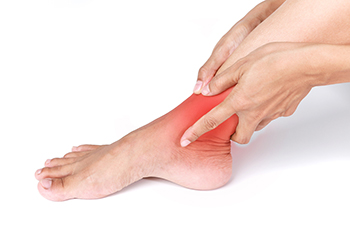 A podiatrist is a doctor that specializes in the treatment of foot conditions. There are many issues with the feet that can develop that a podiatrist should address. For example, if you have a wound or sore that won’t heal, a podiatrist should examine it, especially if you have diabetes. Any joint pain, pain with elevated legs, pain that increases with activity, or severe pain that lasts more than a day, can be from a variety of issues. Numbness, tingling or a burning can indicate neuropathy. Any discolorations in the feet or toes should be looked at as well because of the possibility of an infection. Lastly, if you are starting to run more often, a podiatrist can help identify potential problems and give advice to avoid them. If you have any other questions about issues regarding your feet, don’t hesitate to ask your podiatrist.
A podiatrist is a doctor that specializes in the treatment of foot conditions. There are many issues with the feet that can develop that a podiatrist should address. For example, if you have a wound or sore that won’t heal, a podiatrist should examine it, especially if you have diabetes. Any joint pain, pain with elevated legs, pain that increases with activity, or severe pain that lasts more than a day, can be from a variety of issues. Numbness, tingling or a burning can indicate neuropathy. Any discolorations in the feet or toes should be looked at as well because of the possibility of an infection. Lastly, if you are starting to run more often, a podiatrist can help identify potential problems and give advice to avoid them. If you have any other questions about issues regarding your feet, don’t hesitate to ask your podiatrist.
If you are experiencing pain in the feet or ankles, don’t join the stubborn majority refusing treatment. Feel free to contact Alex Kim, DPM from AVID Foot & Ankle Center. Our doctor can provide the care you need to keep you pain-free and on your feet.
What Is a Podiatrist?
Someone would seek the care of a podiatrist if they have suffered a foot injury or have common foot ailments such as heal spurs, bunions, arch problems, deformities, ingrown toenails, corns, foot and ankle problems, etc.
Podiatric Treatment
A podiatrist will treat the problematic areas of the feet, ankle or lower leg by prescribing the following:
- Physical therapy
- Drugs
- Orthotic inserts or soles
- Surgery on lower extremity fractures
A common podiatric procedure a podiatrist will use is a scanner or force plate which will allow the podiatrist to know the designs of orthotics. Patients are then told to follow a series of tasks to complete the treatment. The computer will scan the foot a see which areas show weight distribution and pressure points. The podiatrist will read the analysis and then determine which treatment plans are available.
If you have any questions please feel free to contact our office located in Little Elm, TX . We offer the newest diagnostic and treatment technologies for all your foot and ankle needs.




